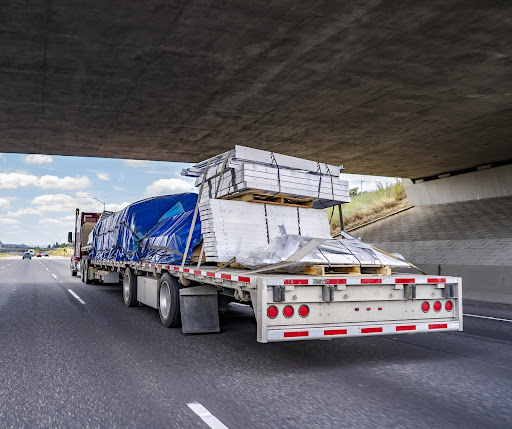Semi-trucks are a common sight on the highways around Macon, GA, but the giants of the roadway are anything but ordinary. These vehicles weigh 80,000 pounds fully loaded, more than ten times as much as a passenger car. Collisions between the two often result in catastrophic injuries for the smaller vehicle.
One of the most terrifying types of semi-truck collisions is an underride accident, which is a life-changing, often fatal, event. If you or a loved one was hurt in an underride truck accident, contact an experienced Macon truck accident attorney today at (478) 216-1664 to pursue a settlement.

How much does it cost to hire an underride accident lawyer in Macon?
At Rafi Law Firm, we understand that victims of underride accidents have already gone through a lot – financial strain is the last thing we want to put on our clients. That’s why you’ll never owe a dime unless and until we win your case.
What causes underride truck accidents?
According to the National Highway Traffic Safety Administration (NHTSA), an underride semi-truck accident is one in which a car slides underneath the truck’s body, due to the difference in height between the two vehicles. Sometimes, the smaller vehicle passes underneath the truck to the other side; other times, it may be stuck beneath the semi.
According to the Insurance Institute for Highway Safety (IIHS), in 2021, there were nearly 500 accident fatalities caused by a side underride alone, meaning there were even more catastrophic injuries.
How could a truck driver not be aware of a car underneath their vehicle?
If a car is wedged beneath the trailer, even a smaller one weighing 1,000 pounds, should still create drag on the vehicle, adding extra weight to the trailer. Wouldn’t a trucker feel the impact of running over another vehicle? If a truck driver is distracted or driving under the influence, they may not register that something has happened.
Further, the cab of a semi-truck is loud, so a truck driver may not realize they’ve run the trailer over another car. Perhaps they feel the impact of the collision but may not realize that the car they struck is underneath the trailer. The driver could attribute the collision to a gust of wind or a piece of road debris striking the truck.
Front, rear, and side – Types of underride truck accidents
There are three main types of underride collisions, each of which poses different dangers to the car and passengers.
Front underride accidents
Front underride accidents happen when a semi runs over the top of the smaller vehicle, causing the smaller car to be wedged beneath it.
Rear underride accidents
Rear-ending underride accidents happen when the truck stops suddenly and the car behind it can’t stop in time. Semis have a rear guard to prevent this, but if the car is traveling fast enough, or if the guard is damaged or missing, the hood of the car is wedged beneath the trailer.
Side underride accidents
Despite the obvious safety benefits, many semi-trucks do not have side guards preventing vehicles from getting wedged beneath them. When a car crashes into the side of a trailer or truck and slides underneath, it can be stuck. Side underride collisions are most common at night, when visibility is poor, or if the truck merges onto the highway and doesn’t see the smaller vehicle.
How and why do vehicles get stuck under trucks?
The difference in height between the bottom of a semi’s trailer and the hood of a car is great enough so that when a car runs into the path of a semi truck’s trailer, the hood gets wedged beneath it. Sometimes, if the car is smaller, it may slide mostly under the semi, shearing off the roof and often killing the car’s occupants. Because the windshield often takes the brunt of the impact, the airbags may not deploy.
If the truck is turning, an oncoming car may not realize the trailer is there and plow beneath it, or a truck could run over a car in its blind spot making a right-hand turn. Improperly changing lanes – not looking before merging – is an extremely common way a car could end up wedged sideways under a semi.
Navigating wide turns and ensuring safety at intersections
Trucks turning right may not notice a small car on their right if the car is in the truck’s blind spot. As the truck turns, the trailer could pass over the roof of the car and trap the car.
If you’re beside a truck that’s turning right, try to stay out of its blind spot. Semi-trucks have a turning radius of about 50 feet, so if you notice a truck signaling a turn, stay far enough back so you aren’t in its blind spot so the driver can see you.
Truck blindspots
All vehicles have blind spots, but semi trucks have larger ones than the ones in your own vehicle. A blind spot is part of the road and traffic behind you that you cannot see with your rearview and side mirrors.

The rule of thumb for a trucker’s blind spot is that if you can’t see the truck’s mirrors, the driver can’t see you. In a passenger car, you’re able to look over your shoulders to check for other vehicles in your blind spot; commercial truck drivers don’t have that option.
There’s a “no zone” where cars are traveling in a trucker’s blind spot. Knowing the areas around the truck where you can’t be seen can help you take measures to avoid being in one:
- Directly to the right side of the vehicle
- Adjacent to the truck driver’s seat
- Within 30 feet of the back of the trailer
- Within 20 feet of the front of the cab
The “no zone” is bigger on the truck’s right side because that mirror is curved, distorting the image. The trucker can see the traffic far behind them but nothing immediately to their right. Some trucks may have smaller mirrors installed or other safety equipment to reduce blind spots, but this isn’t mandatory.
Steps to take if your vehicle is stuck underneath a truck
Being trapped beneath a semi, possibly being dragged by the vehicle, is terrifying. Protect yourself if you can, by covering your head if possible.
Take action to alert the truck driver or others about your predicament. Try honking the horn or, if you’re able, turn on your flashers to attract notice.
Federal guidelines: Safeguarding against underride accidents
The NHTSA requires rear guards for all semi-trailers but not side guards. In a recent report, the agency determined that 17.2 lives would be saved and 69 serious injuries prevented with the addition of side guards on all eligible trailers and semi-trailers. The cost, however, could be as high as $1.2 billion to outfit all the trailers and semi-trailers with side guards.
Without federal regulations, the optional installation of side guards falls on the trucking carrier or truck owner-operators.
Our Macon underride truck accident attorneys are here to help
Have you been injured in a semi-truck underride accident? You don’t have to face the aftermath alone. Your Macon truck accident attorney is ready to represent your interests and fight for maximum compensation for your losses. Contact us today at (478) 216-1664 for a free consultation.



